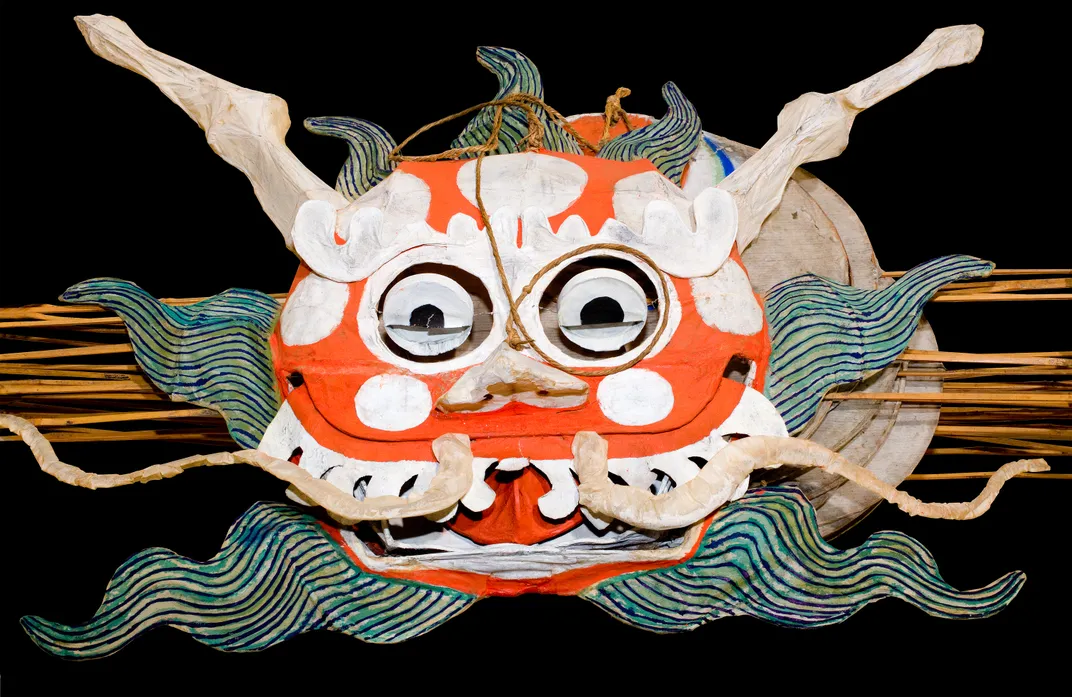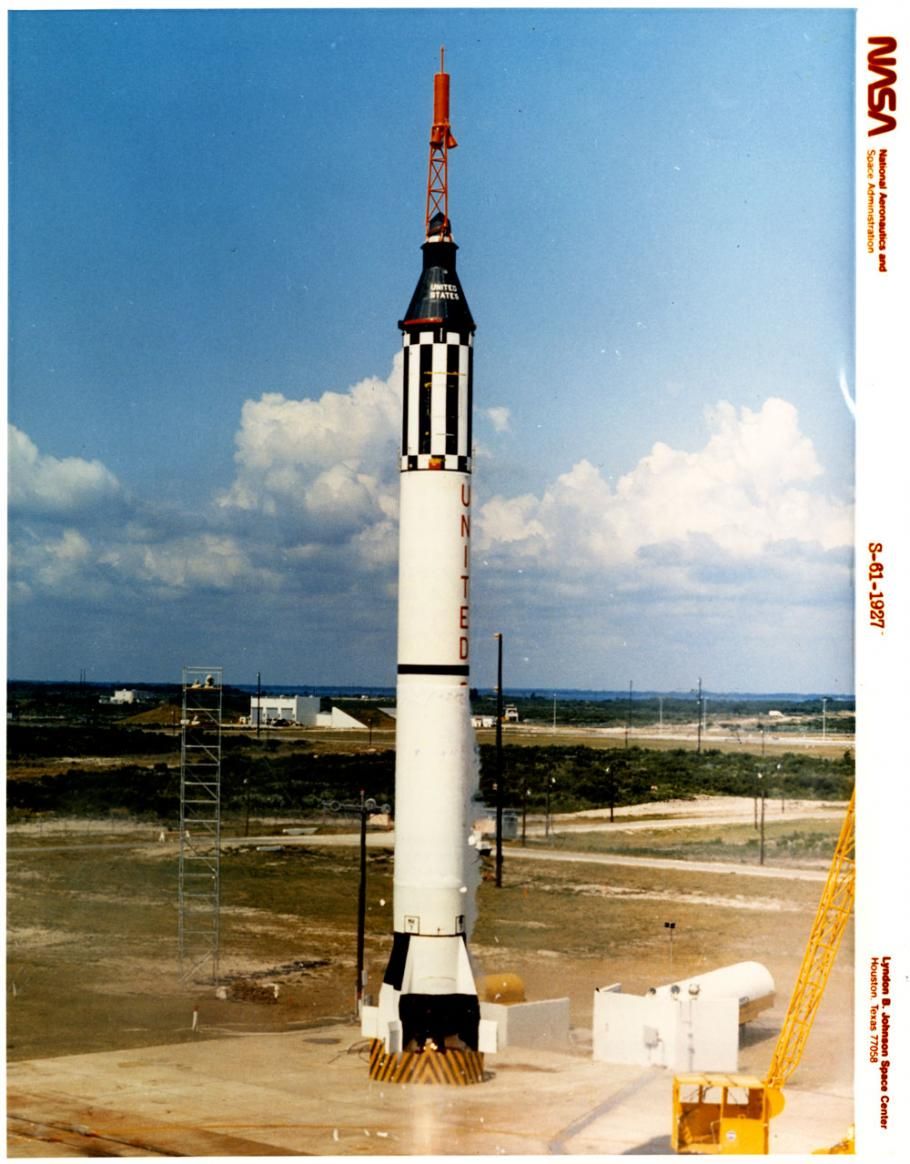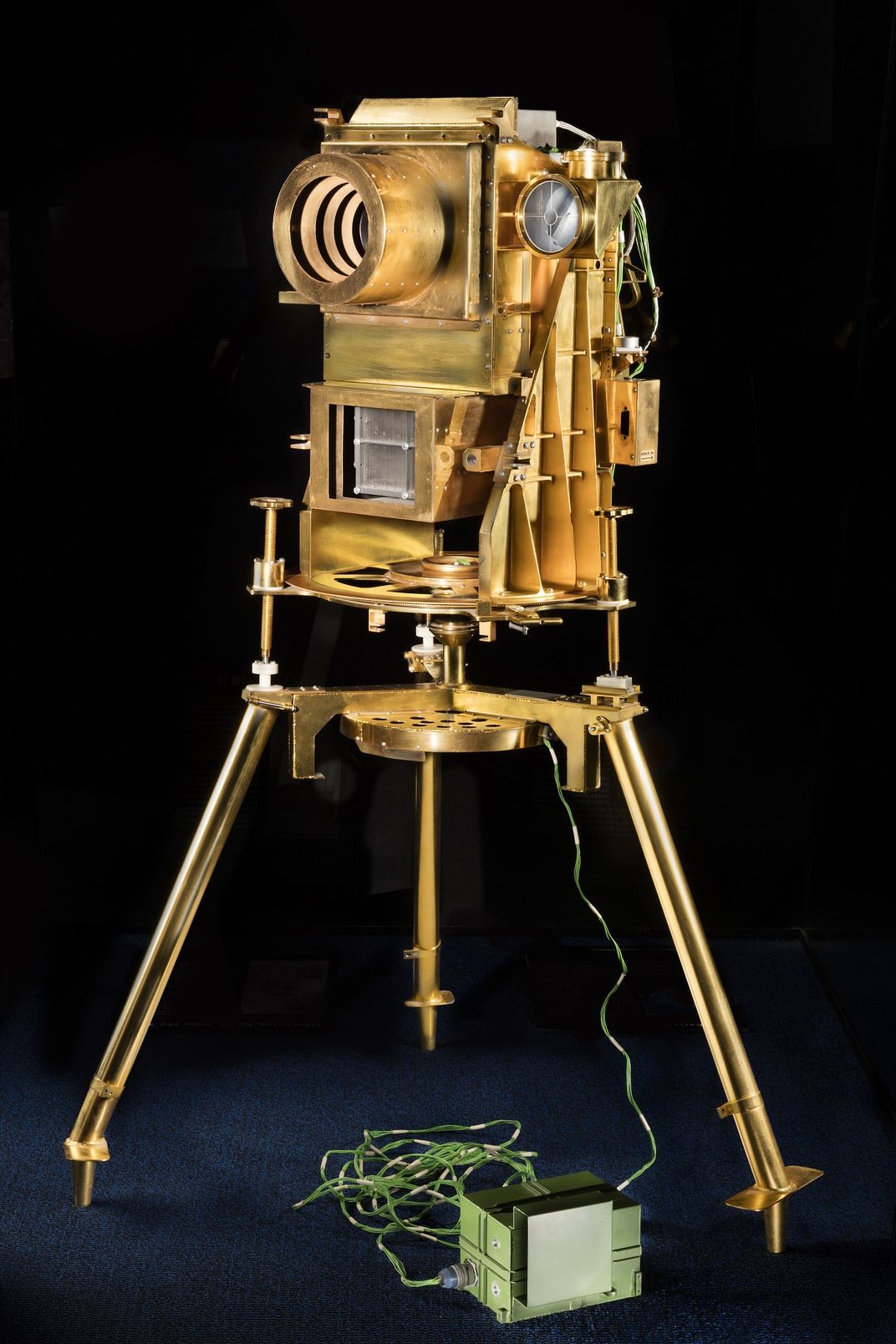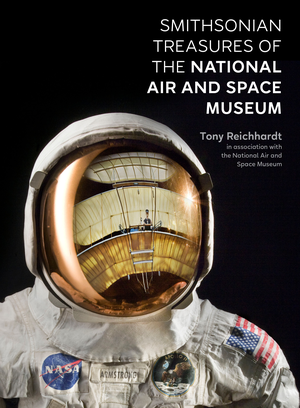Ten Treasures from the National Air and Space Museum
No need to wait in line—you can experience the Smithsonian’s National Air and Space Museum with these ten incredible artifacts!
:focal(2529x1541:2530x1542)/https://tf-cmsv2-smithsonianmag-media.s3.amazonaws.com/filer_public/41/0a/410a2cb7-c7f8-457e-af2f-d75b637c4442/sr-71_blackbird.jpg)
Today, the National Air and Space Museum holds in trust more than sixty thousand artifacts and millions of additional objects, from letters and manuscripts to technical drawings, photographs, and works of art. Together, they document the field of aerospace in all its richness and variety. Enjoy ten amazing artifacts from its collection:
1. Chinese dragon kite

Kites were the first human-made objects to achieve sustained flight. This Chinese dragon kite was originally shown at the Centennial International Exposition in Philadelphia in 1876 and was one of the first aeronautical objects in the museum’s collection.
2. Lockheed SR-71 Blackbird spy plane
/https://tf-cmsv2-smithsonianmag-media.s3.amazonaws.com/filer_public/41/0a/410a2cb7-c7f8-457e-af2f-d75b637c4442/sr-71_blackbird.jpg)
Introduced in the mid-1960s, the Lockheed SR-71 Blackbird spy plane is still the fastest piloted jet aircraft ever built, with a cruising speed above Mach 3. The museum’s Blackbird (61-7972) logged about twenty-eight hundred hours of flight time during twenty-four years of service with the US Air Force. During its final flight on March 6, 1990, Lieutenant Colonels Ed Yielding and Joseph Vida set a speed record by flying from Los Angeles to Washington, DC, in one hour, four minutes, and twenty seconds, averaging 2,124 miles per hour. For more than a decade before it went on display at the Steven F. Udvar-Hazy Center in 2003, the Smithsonian’s SR-71 was stored in a custom hangar built for its protection in a secured area at nearby Dulles Airport.
3. Congressional Gold Medal
/https://tf-cmsv2-smithsonianmag-media.s3.amazonaws.com/filer_public/ac/4a/ac4a7ffd-f892-4feb-ae49-3048506eeb74/congressional_medal.jpg)
In 2009, the Congressional Gold Medal was awarded to the hundreds of members of the Women Airforce Service Pilots (WASP), civilian employees who tested aircraft, trained other pilots, and ferried airplanes for the military during World War II.
4. Shepard’s Freedom 7 Mercury

On May 5, 1961, Alan Shepard became the first American in space. Launched on top of a Redstone rocket, his black-painted Mercury capsule reached an altitude of 116 miles, almost twice as high as the X-15. Five months later, NASA gave Shepard’s Freedom 7 Mercury spacecraft to the Smithsonian.
5. Starship Enterprise
/https://tf-cmsv2-smithsonianmag-media.s3.amazonaws.com/filer_public/21/d7/21d7565b-6e1e-4051-9d93-df5a14dffad8/starship_enterprise.jpg)
The Smithsonian collection includes this eleven-foot model of starship Enterprise used in filming the original Star Trek series in the late 1960s— one of the most influential shows in television history. The model is constructed mainly of poplar wood, vacuum-formed plastic, rolled sheet metal tubes for the engine pods, and plastic for the main sensor dish and detailing. Paramount Studios donated it to the Smithsonian in 1974.
6. Lunar Surface Camera

The first telescope used on another world was the lunar surface camera designed by George Carruthers of the Naval Research Laboratory, one of the few African American scientists to work on Apollo. The Smithsonian has a qualification test unit with the actual film cartridge brought back from the Moon.
7. Amelia Earhart's Goggles
/https://tf-cmsv2-smithsonianmag-media.s3.amazonaws.com/filer_public/63/dc/63dc6cd7-6a57-48ae-96b5-d26f65d45a77/earhart_goggles.jpg)
Earhart wore these flight goggles during the 1929 Women’s National Air Derby, one of the first air races for women.
8. Wiley Post Pressure Suit
/https://tf-cmsv2-smithsonianmag-media.s3.amazonaws.com/filer_public/e0/4e/e04e066f-f256-4e74-957a-a78a2d0c8c60/wiley_post_pressure_suit.jpg)
In 1933, flying a Lockheed Vega equipped with a Sperry autopilot, Wiley Post was the first person to make a solo round-the-world flight. The Winnie Mae, now in the Smithsonian, made the trip in seven days, eighteen hours. Two years later, Post wore this B.F. Goodrich pressure suit—the world’s first—during a high-altitude flight in Winnie Mae from California to Cleveland.
9. Balloon Ascension Photograph
/https://tf-cmsv2-smithsonianmag-media.s3.amazonaws.com/filer_public/8a/7e/8a7ea8ff-18f1-4d09-911c-29e6e5b2fd1b/john_steiner_balloon_ascension_ambrotype.jpg)
This quarter-plate glass ambrotype made by an unknown photographer shows preparations for a balloon ascension by John Steiner at Erie, Pennsylvania, on June 18, 1857. The scene, picturing a ring of people surrounding the balloon as it’s being inflated, is thought to be the earliest dated photograph of a balloon flight in the United States.
10. The Apollo lunar module
/https://tf-cmsv2-smithsonianmag-media.s3.amazonaws.com/filer_public/88/71/8871154b-7625-4a13-8e1d-dd720c5c74b8/lunar_module.jpg)
The Apollo lunar module (LM) that ferried astronauts from lunar orbit to the Moon’s surface and back had two main parts. The upper ascent stage (above the gold-colored foil) consisted of a pressurized crew compartment and a rocket engine for lifting off from the Moon after the astronauts finished exploring. The lower descent stage remained on the Moon. The Smithsonian’s lunar module, LM-2, was originally built for an Earth-orbit test flight that was canceled. All the LMs were slightly different; this one was modified to appear like the Apollo 11 LM Eagle.
Discover more of the wonder of air and space by visiting the Smithsonian's National Air and Space Museum or visit from home with Smithsonian Treasures of the National Air and Space Museum, available from Smithsonian Books. Visit Smithsonian Books’ website to learn more about its publications and a full list of titles.
Excerpt from Smithsonian Treasures of the National Air and Space Museum © 2023 by Smithsonian Institution

